Abstract
A sero-epidemiological survey, using an indirect immunofluorescence test for IgG against Coxiella burnetii (phase II), was carried out in the Netherlands. Serum samples taken in 1968, 1975, 1979 and 1983 were tested. Occupational groups with a supposedly high risk of infection (veterinarians, residents of dairy farms and taxidermists) showed a significantly higher percentage of seropositives than defined controls. The percentage of seropositive amateur wool spinners was significantly higher than that of the controls from the same region. Since 1968 there has been no increase in the percentage of infected persons, indicating that, contrary to earlier assumptions, Q fever has been endemic in The Netherlands for a long time already. The increase in numbers of notified cases of overt Q fever is considered to be the result of the recent introduction of a sensitive indirect immunofluorescence test for IgM antibodies against C. burnetii. Antibody percentages in all age classes between 1 and 64 years were much alike, suggesting that most infections occur in early childhood. This is in accordance with the finding that 35% of our patients are younger than 3 years. The possibility of infection related to childbirth and lactation is discussed.
Full text
PDF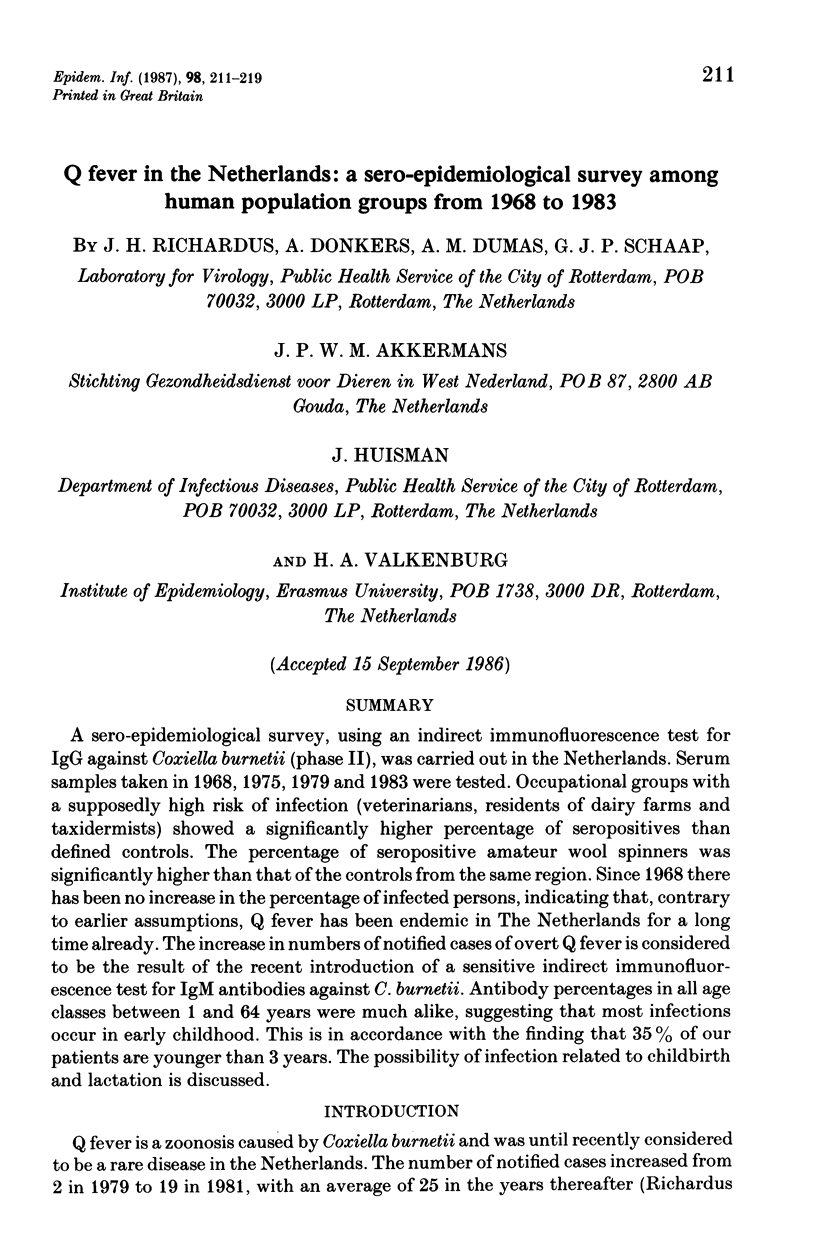
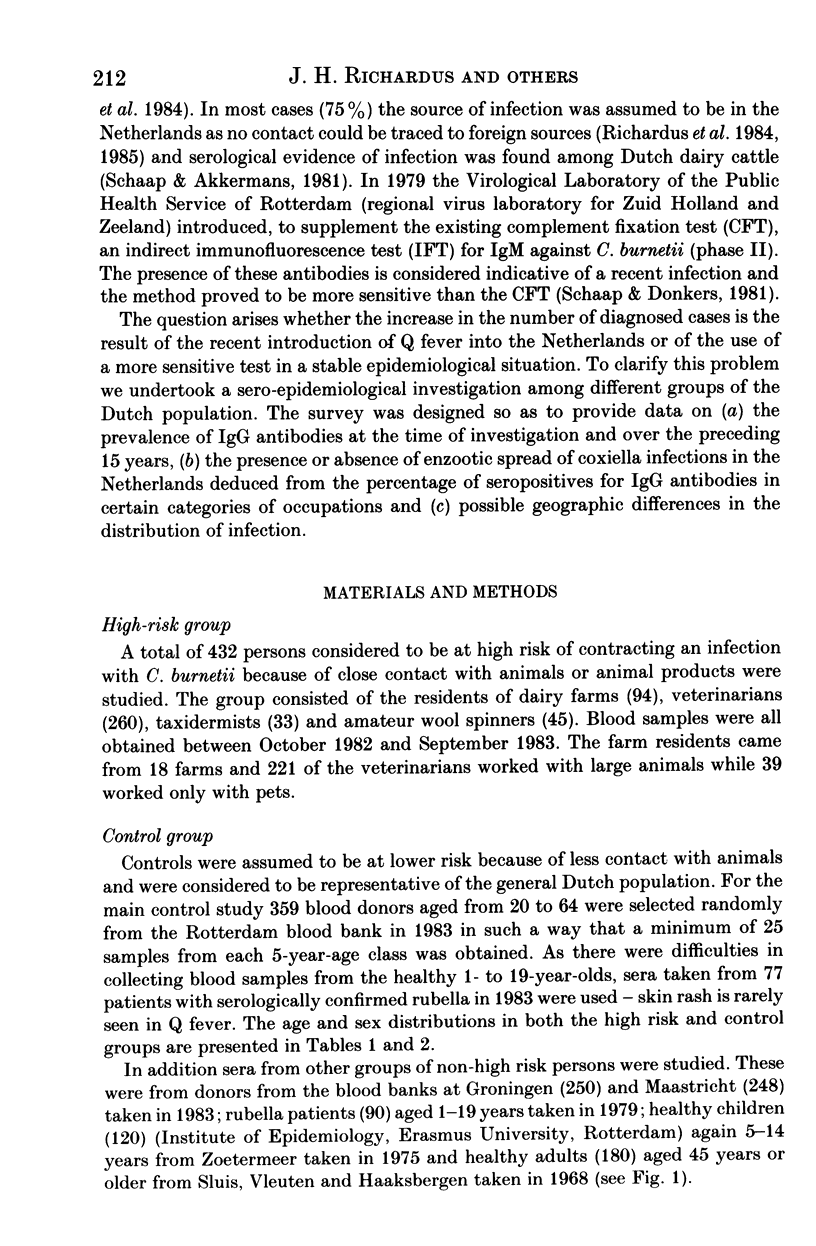
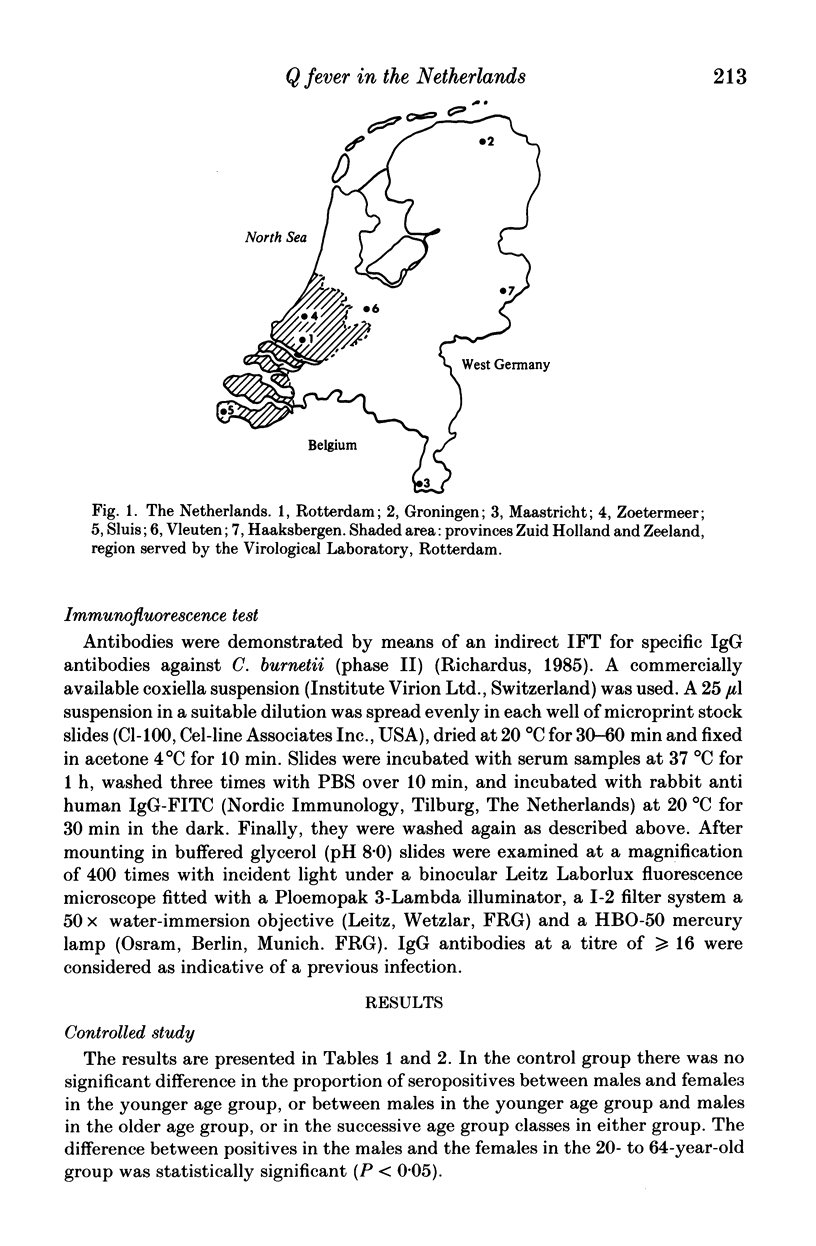
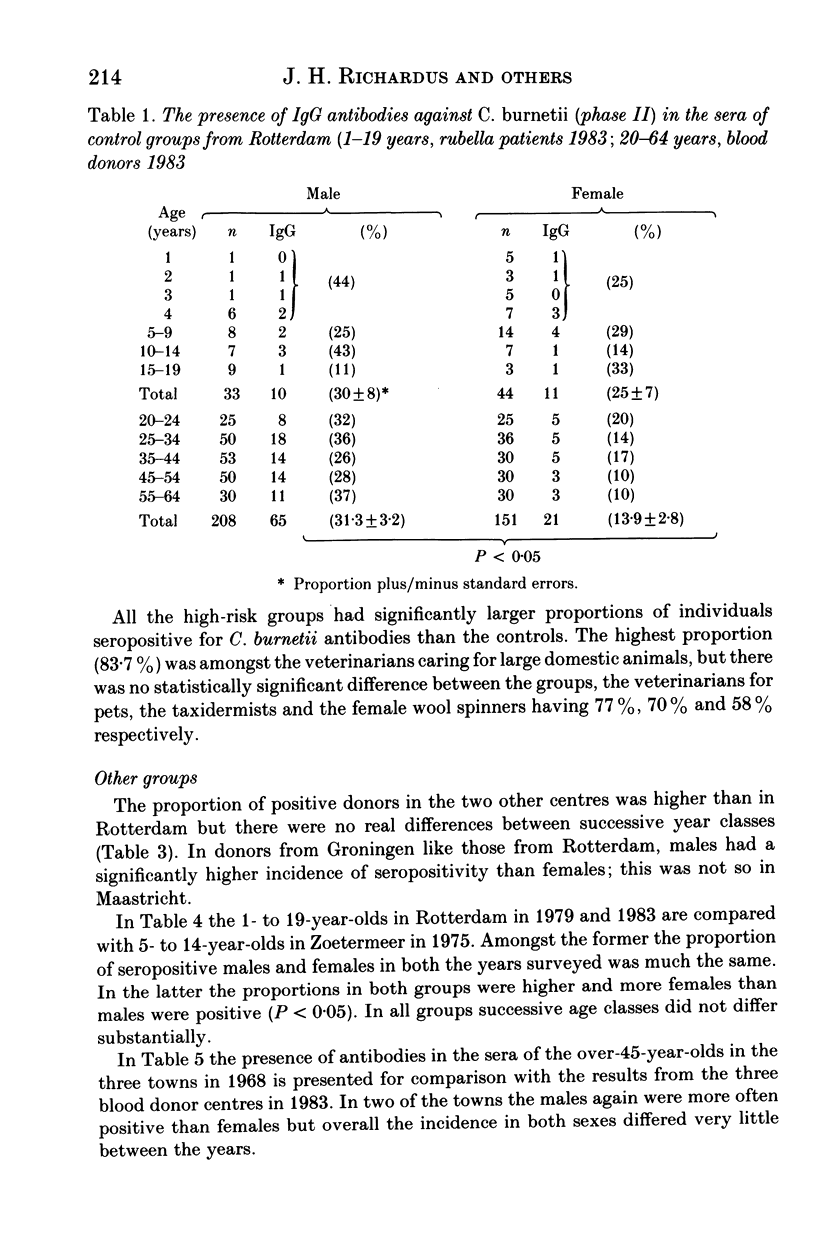
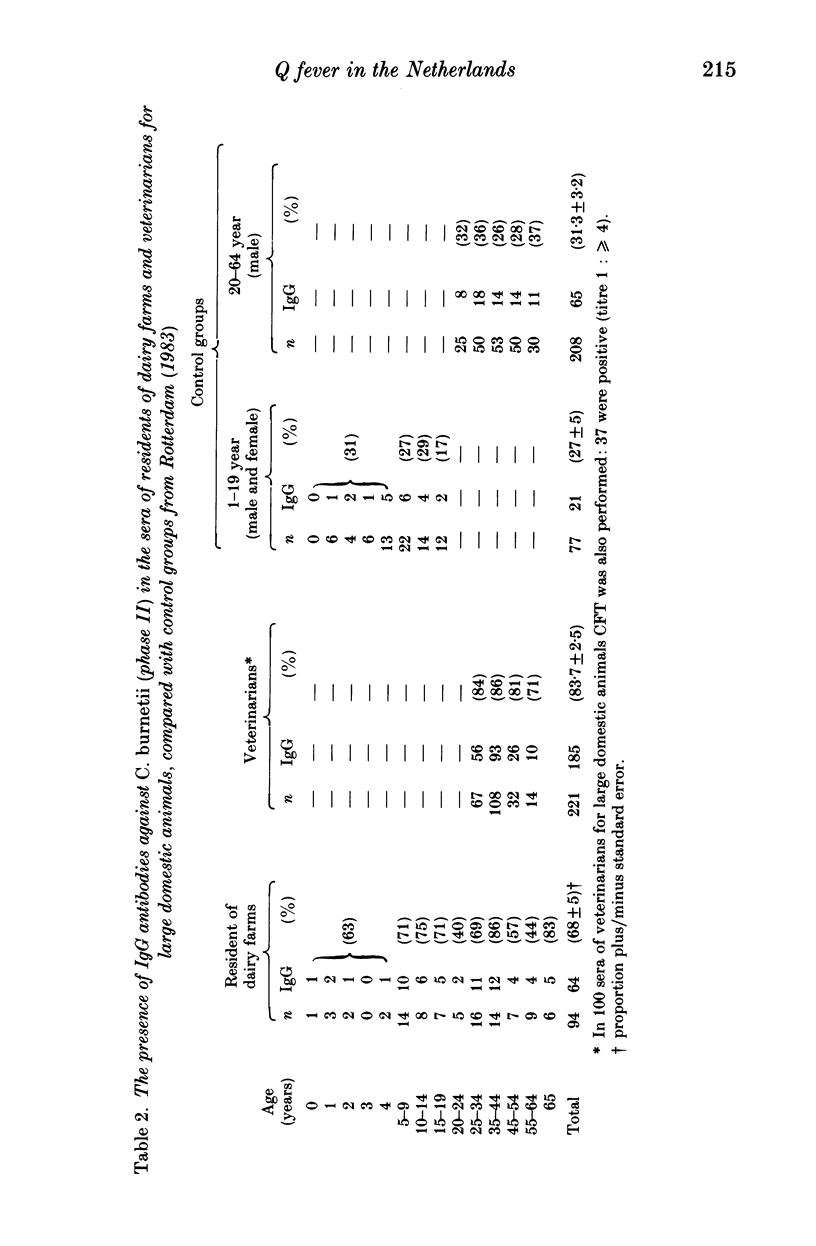
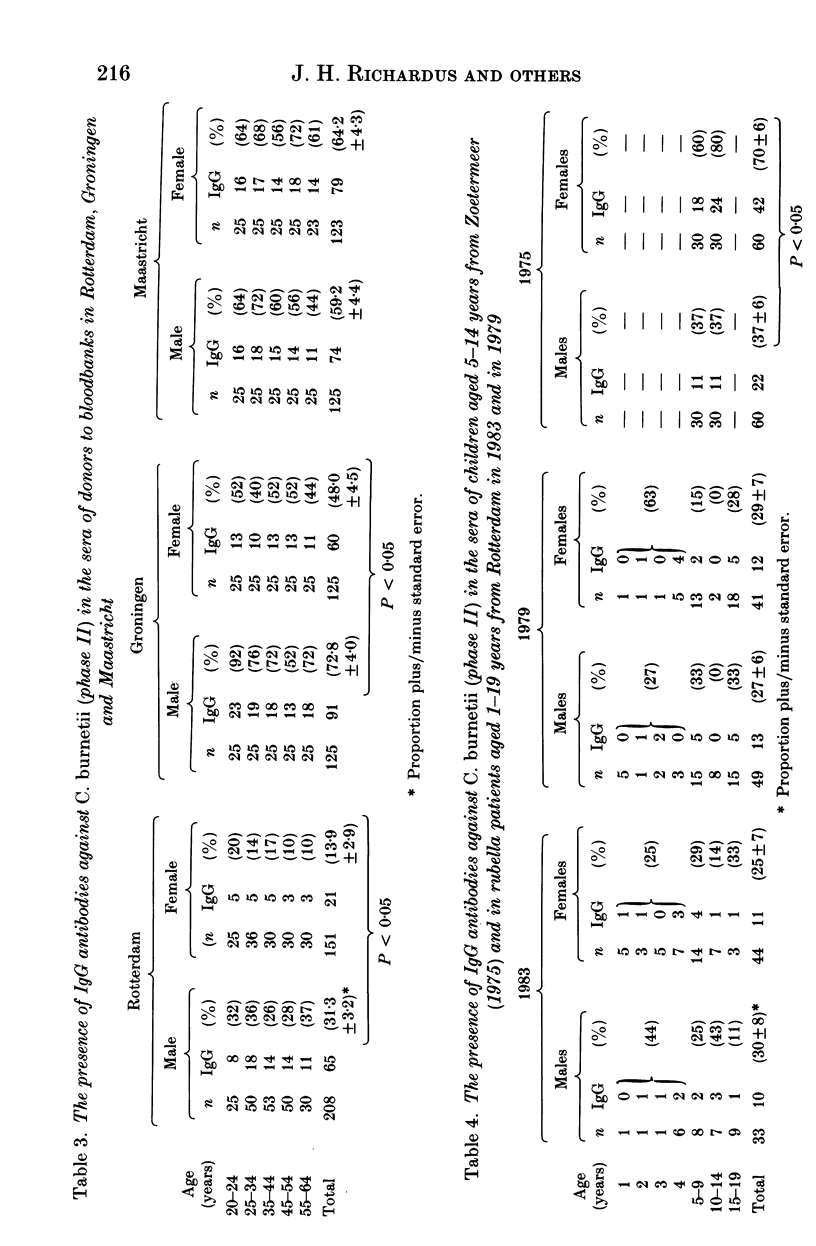
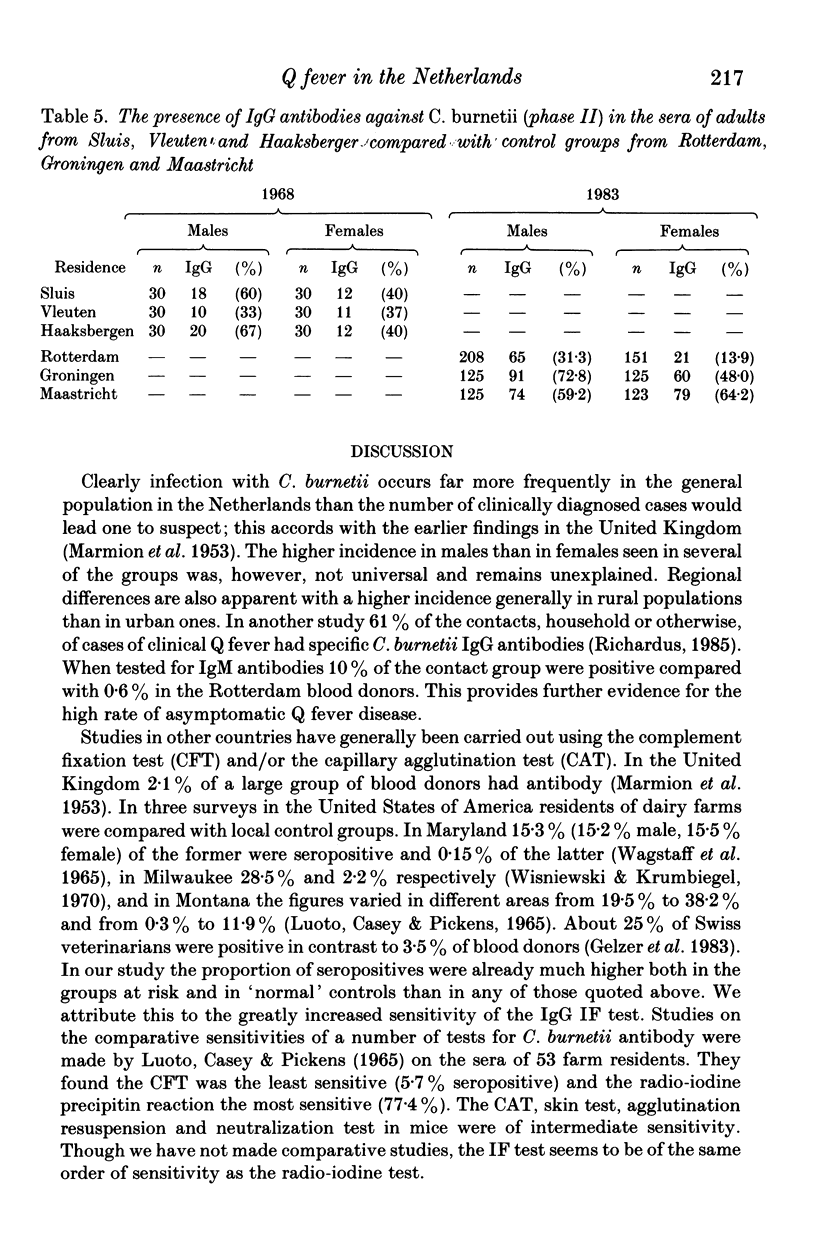
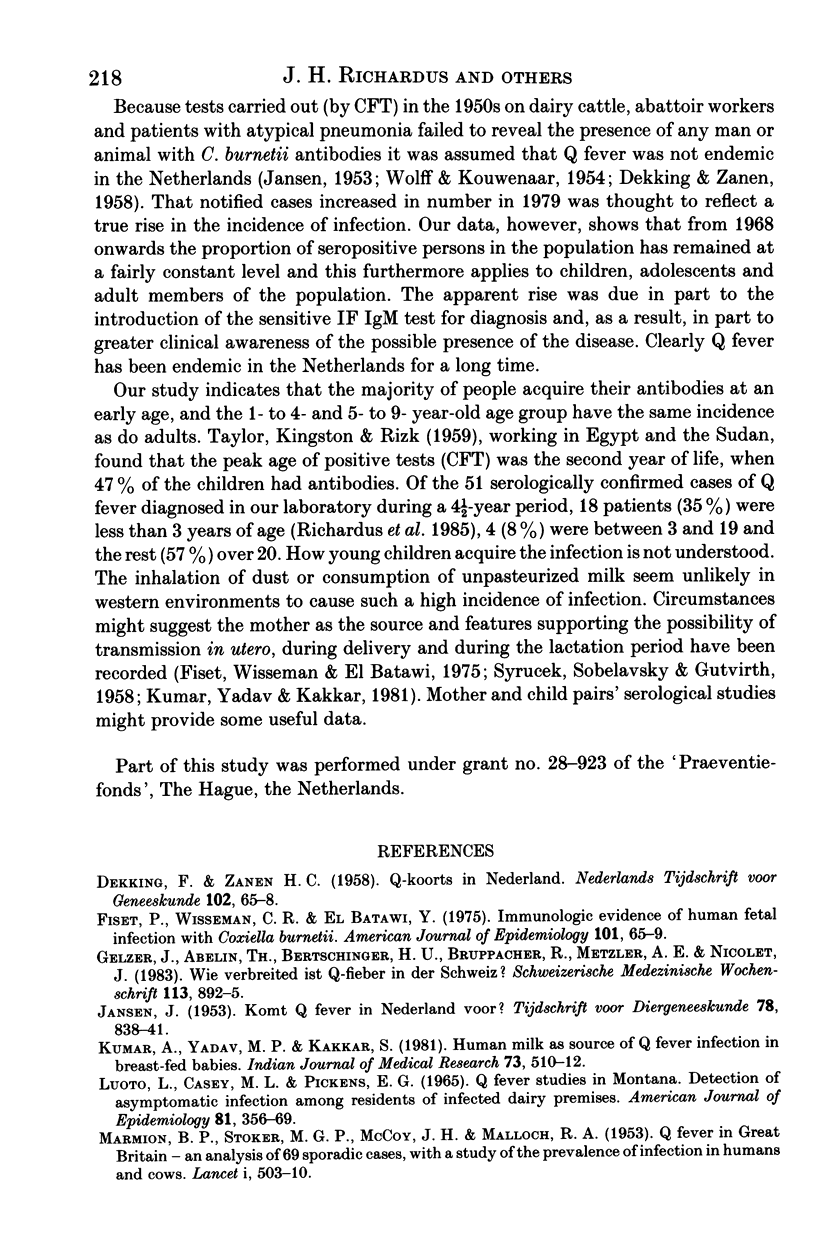
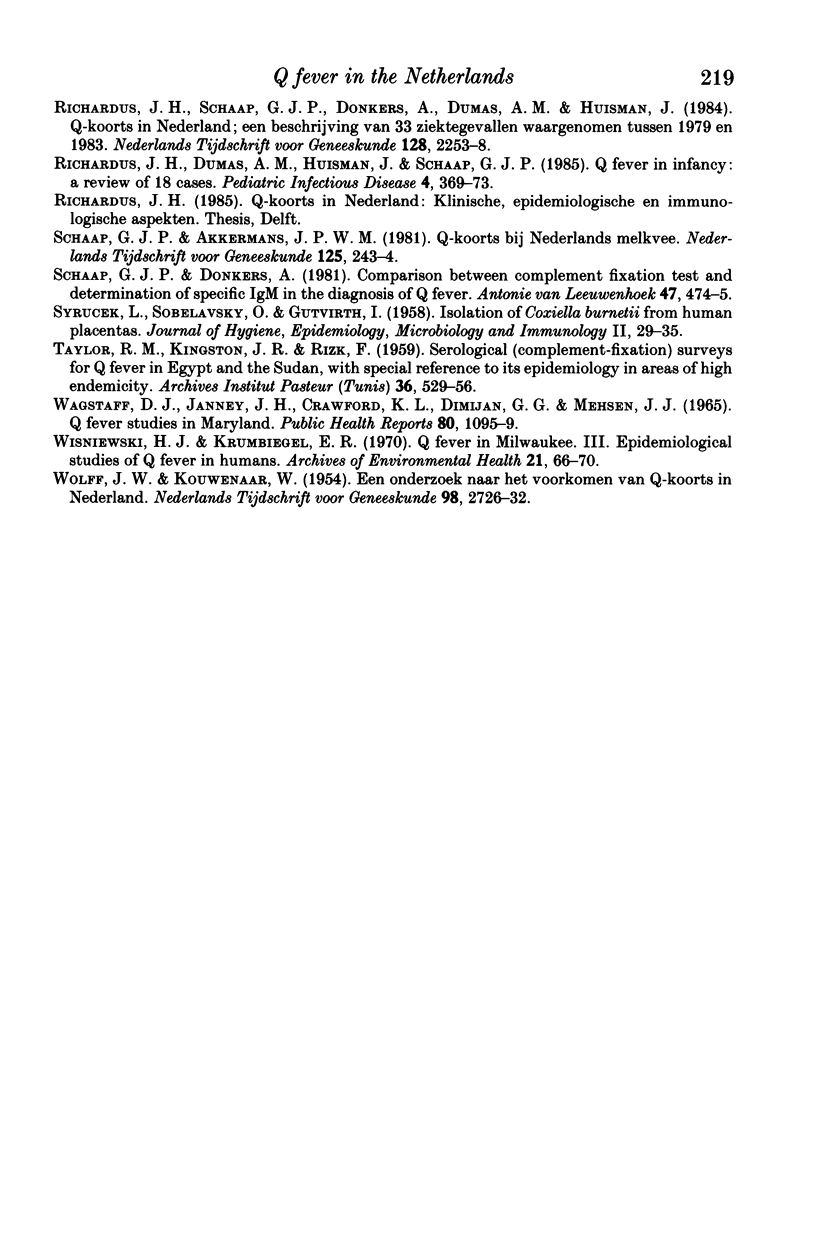
Selected References
These references are in PubMed. This may not be the complete list of references from this article.
- Gelzer J., Abelin T., Bertschinger H. U., Bruppacher R., Metzler A. E., Nicolet J. Wie verbreitet ist Q-Fieber in der Schweiz? Schweiz Med Wochenschr. 1983 Jun 18;113(24):892–895. [PubMed] [Google Scholar]
- Kumar A., Yadav M. P., Kakkar S. Human milk as a source of Q-fever infection in breast-fed babies. Indian J Med Res. 1981 Apr;73:510–512. [PubMed] [Google Scholar]
- LUOTO L., CASEY M. L., PICKENS E. G. Q FEVER STUDIES IN MONTANA. DETECTION OF ASYMPTOMATIC INFECTION AMONG RESIDENTS OF INFECTED DAIRY PREMISES. Am J Epidemiol. 1965 May;81:356–369. doi: 10.1093/oxfordjournals.aje.a120522. [DOI] [PubMed] [Google Scholar]
- MARMION B. P., STOKER M. G. P., MCCOY J. H., MALLOCH R. A., MOORE B. Q fever in Great Britain; an analysis of 69 sporadic cases, with a study of the prevalence of infection in humans and cows. Lancet. 1953 Mar 14;1(6759):503–510. doi: 10.1016/s0140-6736(53)92356-3. [DOI] [PubMed] [Google Scholar]
- Richardus J. H., Dumas A. M., Huisman J., Schaap G. J. Q fever in infancy: a review of 18 cases. Pediatr Infect Dis. 1985 Jul-Aug;4(4):369–373. doi: 10.1097/00006454-198507000-00007. [DOI] [PubMed] [Google Scholar]
- Richardus J. H., Schaap G. J., Donkers A., Dumas A. M., Huisman J. Q-koorts in Nederland; een beschrijving van 33 ziektegevallen waargenomen tussen 1979 en 1983. Ned Tijdschr Geneeskd. 1984 Dec 1;128(48):2253–2258. [PubMed] [Google Scholar]
- SYRUCEK L., SOBESLAVSKY O., GUTVIRTH I. Isolation of Coxiella burneti from human placentas. J Hyg Epidemiol Microbiol Immunol. 1958;2(1):29–35. [PubMed] [Google Scholar]
- Schaap G. J., Akkermans J. P. Q-koorts bij Nederlands melkvee. Ned Tijdschr Geneeskd. 1981 Feb 7;125(6):243–244. [PubMed] [Google Scholar]
- WOLFF J. W., KOUWENAAR W. Een onderzoek naar het vórkomen van Q-koorts in Nederland. Ned Tijdschr Geneeskd. 1954 Sep 25;98(39):2726–2732. [PubMed] [Google Scholar]
- Wagstaff D. J., Janney J. H., Crawford K. L., Dimijian G. G., Joseph J. M. Q fever studies in Maryland. Public Health Rep. 1965 Dec;80(12):1095–1099. [PMC free article] [PubMed] [Google Scholar]
- Wisniewski H. J., Krumbiegel E. R. Q fever in the Milwaukee area. 3. Epidemiological studies of Q fever in humans. Arch Environ Health. 1970 Jul;21(1):66–70. doi: 10.1080/00039896.1970.10667194. [DOI] [PubMed] [Google Scholar]


